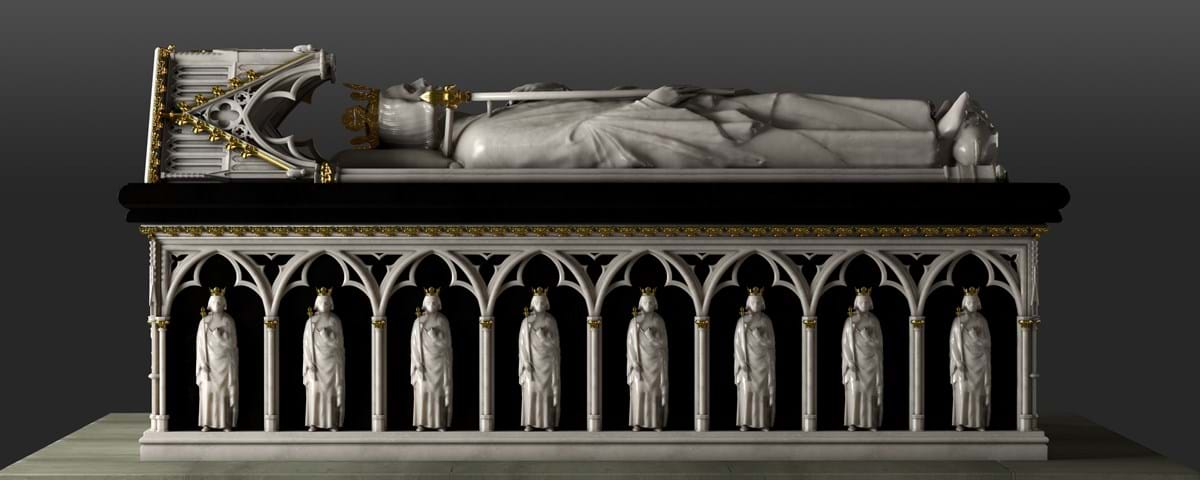
London: The tomb of Robert the Bruce, one of Scotland's most revered heroes, has been recreated using 3D technology.
Alex Paterson, Chief Executive of Historic Environment Scotland (HES), presented the half-scale model of the lost tomb at an event in the Dunfermline Abbey Church.
Bruce, who ruled as King of Scotland from 1306 - 1329, is credited with securing Scottish independence from English rule.
The Lost Tomb of Robert the Bruce, a collaborative project between HES's predecessor bodies and the Centre for Digital Documentation and Visualisation (CDDV) to recreate the tomb from fragments, started in 2013. The reconstruction was then exhibited at a number of venues across the country, and will now be permanently housed at Dunfermline Abbey Church.
3D laser scanning was used to record all 19 known surviving fragments of the tomb. This enabled them to be 3D printed and used by an advisory board of experts as the basis for academic study and reconstruction. Their work, largely based on the forms of contemporary French royal tombs that have survived, then informed the creation of a half-scale 3D digital model used as the exhibition piece.
Dr Iain Fraser, Archives Manager at HES, said "I am delighted to see the model of the Lost Tomb of Robert the Bruce installed here in Dunfermline Abbey Parish Church. This fulfils a project that started six years ago – among the first of its kind in Scotland to use cutting edge 3D scanning.
"The project would have been impossible without the active and willing contribution of a wide range of partners and as a result, the public can now see what Robert the Bruce’s tomb would have looked like, alongside his final resting place."
On his death, Bruce's heart was removed so that it might posthumously be taken to the Holy Land, it is buried at Melrose Abbey, another HES property in care. His tomb was destroyed during the Reformation (along with all the other Royal tombs in the Abbey). Fragments of it along with Bruce's remains were discovered in 1817 and excavated in 1818.
The skeletal remains were reinterred beneath Dunfermline Abbey Church and the grave sealed with a thick layer of molten bitumen to protect it from interference. The existing fragments of the tomb are held with National Museums Scotland, Abbotsford House, Hunterian Museum and Dunfermline Museum.
Reverend Maryann Rennie, Minister at Dunfermline Abbey Church said "It is exciting for the congregation here to receive the model of the Lost Tomb of Robert the Bruce. It allows those visiting to connect the 19th century brass plaque to the more ancient burial cask of Robert the Bruce.
"We hope those visiting also experience why this site was important to Robert the Bruce and to the many pilgrims who have travelled here looking for a sense of peace and rest."